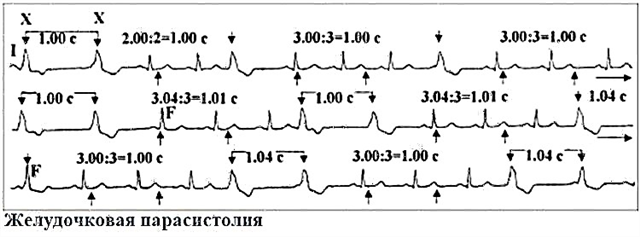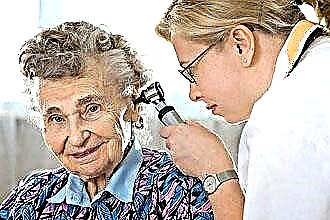The rapid heartbeat associated with tachycardia is often a signal for concern. However, such arrhythmia is not always life-threatening. In some cases, it indicates overwork or getting into a stressful situation, and in others - about the development of pathologies of the heart and internal organs. If the disease occurs paroxysmally, then paroxysmal sinus tachycardia can be diagnosed. It has the correct rhythm, but differs from the usual form in its abrupt appearance and disappearance.
What it is
Sinus tachycardia (otherwise called tachyarrhythmia) is an increase in heart rate (HR) above 90 beats per minute.
In fact, sinus tachycardia is a physiological response to various factors, from emotional experience and taking drops against the common cold to severe heart disease.
Depending on the cause, ST can be transient (for example, when exercising) or permanent.
Most often, ST is a manifestation of the syndrome of autonomous dysregulation, in which the cells of the cardiac conduction system are hypersensitive to various factors.
In terms of prevalence, ST ranks first among all types of arrhythmias. Mostly women suffer from it.
Many patients ask me if sinus tachycardia is dangerous. I answer that CT can be considered relatively safe, but the very fact of its presence may indicate a serious illness and be its first manifestation.
Prolonged course (months, years) of ST adversely affects the condition of the heart muscle (myocardium), since the rapid heartbeat several times increases myocardial oxygen demand. The consequences of this can be myocardial dystrophy and deterioration of its pumping function. Therefore, ST adversely affects the health of people (especially the elderly) with cardiac pathologies (coronary artery disease, chronic heart failure, heart defects).
I want to emphasize that heart rate above 90 in children under 7 years of age is not a deviation. For them, a normal heart rate is considered to be above 100 per minute. On the Internet, you can find special tables of heart rate norms for children of different ages.
Reasons for the appearance and main types
Factors, conditions or diseases that can cause ST:
- physical activity or emotional experience;
- neurotic state - anxiety, fear, depression;
- heart disease - heart failure, defects, myocarditis, etc.;
- smoking, drinking alcohol, coffee, energy drinks;
- medicines - lowering pressure, vasoconstrictor nasal drops, inhalers for bronchial asthma;
- endocrine system diseases - increased thyroid function (hyperthyroidism); adrenal gland tumor that produces adrenaline (pheochromocytoma); lack of a hormone that retains water in the body (diabetes insipidus);
- dehydration;
- infections;
- fever;
- anemia.
Depending on the cause, physiological and pathological CT are distinguished. However, I consider this division to be very arbitrary. For example, exercise stimulates the heart to contract because skeletal muscles need a lot of oxygen to do work. This is physiological ST. And, say, with severe anemia or severe dehydration, all cells in the body also need oxygen. And in this case, an increase in heart rate acts as a compensatory mechanism, but such a tachycardia is considered pathological.
Continuous and paroxysmal (paroxysmal) CT is isolated downstream. Also, inadequate, or disproportionate, CT is distinguished separately, in which the level of increase in heart rate does not correspond to the degree of stress (physical, emotional or pharmacological). For example, with brisk walking or light jogging for a short distance, the heart rate reaches 160-180 per minute. At the same time, in a calm state, the heartbeat is normal (from 60 to 90), and sometimes even reduced (bradycardia).
There is also a special variant of ST - postural orthostatic tachycardia syndrome (SPOT). This syndrome is characterized by an increase in heart rate over 120 / min. when moving from horizontal to vertical. SPOT is caused by a violation of the regulation of vascular tone, as a result of which when a person stands up, the blood is redistributed to the lower parts of the body by gravity, and only after a while blood circulation is normalized.
Symptoms and signs of the condition
Often, ST does not manifest itself in any way and the person feels great. Some patients experience increased heart rate, fatigue, dizziness, and nausea. In people with neuroses, this can be accompanied by a feeling of fear.
With SPOT, these symptoms occur when the person has been lying down for a long time and then stood up abruptly, but they quickly disappear (after a few minutes).
Some patients tell me that they experience difficulty breathing and pain in the heart, they may even faint due to a decrease in blood pressure.
With CT, the course of cardiac disease can be aggravated.
In addition to these complaints, patients with autonomous dysregulation syndrome have many other symptoms: chilliness, cold extremities, tingling sensation in the hands and feet, various disorders of the gastrointestinal tract (belching, flatulence, heaviness in the abdomen, intermittent constipation or diarrhea). the absence of a confirmed gastroenterological disease, sweating, menstrual irregularities in women.
There are no specific changes on the cardiogram, except for an increase in heart rate, with CT.

Paroxysmal variant
Paroxysmal CT is called sinoatrial reciprocal tachycardia (SRT). This is a rather rare form: among all types of paroxysmal tachycardia, it is about 2-3%. Its distinctive feature is the sudden onset and cessation of tachycardia.
I meet this type of flow only in people with cardiac pathology.
Since this tachycardia begins acutely, clinical manifestations (dizziness, difficulty breathing, pain in the heart) are more pronounced than with simple CT. Although asymptomatic seizures are possible.
With CRT, an atrial extrasystole is always present on the electrocardiogram before the paroxysm.
Moderate tachycardia
A slight increase in heart rate (from 90 to 110) is called moderate tachycardia. The reasons for its occurrence are no different from the usual ST. It may reflect the severity of the disease or condition that caused your heart rate to rise.
Although most patients may not feel mild tachycardia, it requires the same attention as CT.
Expert advice: "5 signs that it's time to see a doctor"
By itself, an increased heart rate does not necessarily indicate an illness. It is important under what circumstances this happens and what is accompanied. The following are situations in which you need to see a doctor:
- heart palpitations appear at rest;
- an increase in heart rate is accompanied by severe pain in the heart;
- the person often loses consciousness;
- tachycardia occurs abruptly and suddenly and also stops;
- an increase in heart rate worsens the symptoms of an existing cardiac pathology.
How is sinus tachycardia treated?
Since sinus tachycardia has many causes, the first step is to find out what caused it.
Treatment for sinus tachyarrhythmias includes non-drug and medical methods. Non-drug treatment means quitting smoking, limiting alcohol consumption, and excluding coffee from the diet.
Therapy of the underlying disease quickly leads to the normalization of heart rate.
If ST has arisen against the background of a neurotic state, sedative drugs (tranquilizers) and antidepressants ("Fluoxetine") in the form of tablets are used.
For patients with postural tachycardia syndrome, I recommend taking a contrast shower, consuming a sufficient amount of water and salt. If this turns out to be ineffective, I prescribe Fludrocortisone, a mineralocorticoid hormonal drug that allows you to retain fluid in the vascular bed.
To relieve an attack of CRT, the Valsalva vagal test - straining the face with swelling of the cheeks for 20-30 seconds after maximum inhalation - helps very well.
If CT is accompanied by severe symptoms (poorly tolerated by the patient), I use drugs (MP).
In my practice, I prefer beta-blockers - Bisoprolol (Concor), Metoprolol, Nebivolol. These drugs reduce the sensitivity of the heart to various stimulating factors, and also slow down the conduction of nerve impulses in the conducting system.
Beta-blockers are great for people without cardiac pathology or with heart disease (chronic heart failure). However, in some cases they are contraindicated, for example, for people with severe broncho-obstructive diseases (COPD, bronchial asthma).
Ivabradin (Coraxan), a blocker of the If-channels of the sinus node, has a good "pulsating" effect. Calcium channel blockers (Verapamil, Diltiazem) also reduce heart rate well. These drugs should not be used in patients with severe heart failure (III-IV FC).
If the use of these drugs was unsuccessful, I prescribe cardiac glycosides ("Digoxin"). But you should be careful with them, as they can provoke other heart rhythm disturbances.
For the prevention of seizures in paroxysmal CRT, antiarrhythmic drugs are effective that stabilize the cells of the conducting system and normalize the pulse rate, - "Propafenone", "Flecainide".
All of the above measures allow me to achieve a decrease in heart rate in the vast majority of patients.
However, it so happens that no drug therapy helps. If at the same time CT significantly worsens the patient's condition, I turn to cardiac surgeons for RFA (decoding - radiofrequency ablation). In this operation, the region of the heart that causes ST is destroyed by high-frequency current. However, RFA almost always requires the installation of a permanent pacemaker.
RFA should be the last treatment for CT when everything else has been tried.
Clinical case
A 39-year-old woman consulted a local therapist complaining of a constant palpitations up to 110 per minute, periodically appearing dizziness. These symptoms bother the patient for a month. According to the patient, the pulse was always in the range of 70-80 / min. Examination revealed a high heart rate (106 / min) and a slight increase in blood pressure (130/80 mm Hg). ECG showed sinus tachycardia. No clinical and laboratory signs of heart disease or other pathologies were found. Upon detailed questioning, the patient noted that she suffered from chronic rhinitis and took vasoconstrictor nasal drops ("Naphthyzin") 8-10 times a day for 2 months. A referral to an otorhinolaryngologist was issued. Some time after the abolition of "Naphtizin" and the appointment of competent therapy, the pulse and pressure returned to normal.
Conclusion
Sinus tachycardia is not an independent disease, but a physiological response to various pathological influences. Nevertheless, it can harm health, worsen the course of other heart diseases, therefore, it requires attention from both the patient and the doctor. Sometimes it is enough to eradicate the cause, and in some cases, treatment is necessary. The prognosis directly depends on what caused the sinus tachycardia.



